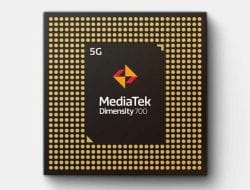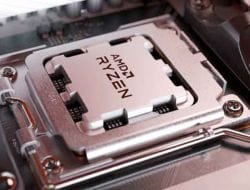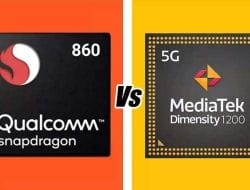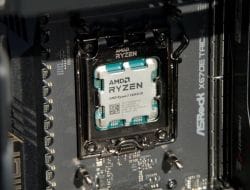FOKUS TEKNOLOGI – If you’re a computer user, you might be curious about the specifications of your system, including the graphics card or GPU. Knowing what graphics card you have can be helpful when troubleshooting issues, optimizing performance, or considering an upgrade. In this article, we will guide you through the process of checking your graphics card on both Windows and Mac systems. So, let’s dive in!
Check What Graphics Card You Have on Windows
Windows users have an easy and quick method to check their graphics card specifications using the Task Manager. Whether you’re on Windows 7, 8, 10, or even Windows 11, follow these steps:
1. Accessing Task Manager
To begin, press Ctrl + Alt + Delete on your keyboard, and a screen will appear. From this screen, select “Task Manager.” Alternatively, you can right-click the taskbar and choose “Task Manager.”
2. Expanding Task Manager
If your Task Manager is in its minimized form, you’ll need to expand it to access all the information. Locate and click on “More details” at the bottom of the Task Manager window.
3. Navigating to the Performance Tab
Once you’ve expanded the Task Manager, navigate to the “Performance” tab at the top of the window. This tab provides detailed information about your system, including the graphics card.
4. Locating GPU 0
Scroll down the list on the left-hand side of the Performance tab until you find “GPU 0.” This heading indicates the presence of a graphics card in your system.
5. Viewing the Full Name of the Graphics Card
If the name of the graphics card is truncated, select it, and the full name will appear in the top right corner. For example, it could be an Nvidia RTX 3070 Ti or any other graphics card model.
It’s worth mentioning that Task Manager also provides additional details about your processor, memory, and storage. Exploring these sections can be beneficial if you’re planning to upgrade or build a new computer.
Additional Information in Task Manager
Apart from finding out the graphics card information, Task Manager offers insights into other essential hardware components of your system. By selecting the individual elements along the left-hand side, such as the processor, memory, or storage, you can gather valuable details about each component. This knowledge can be particularly useful when making informed decisions about upgrades or assessing system requirements for specific tasks.
How to Check What Graphics Card You Have on a Mac
Mac users can also discover their graphics card information by following these steps:
1. Accessing the Apple Icon
Begin by selecting the Apple icon located in the upper-left side of the screen. It’s usually present in the menu bar.
2. Selecting “About this Mac”
From the drop-down menu that appears after clicking the Apple icon, choose “About this Mac.” A window will open, providing various details about your Mac’s configuration.
3. Identifying the Graphics Card Information
Within the “About this Mac” window, you’ll find information about your Mac’s processor, memory, storage drive, and graphics card or GPU. The graphics card details will be displayed in the same section, allowing you to identify the specific model.
Conclusion
In conclusion, knowing what graphics card you have is essential for optimizing performance, troubleshooting issues, and considering upgrades. On Windows, you can easily check your graphics card information using the Task Manager, while Mac users can find this information within the “About this Mac” window. By familiarizing yourself with your system’s graphics card, you can make informed decisions to enhance your computing experience.
FAQs
1. Can I upgrade my graphics card on a Mac?
The ability to upgrade graphics cards on a Mac depends on the specific model. While some Macs allow for user-upgradable graphics cards, most Mac systems have integrated graphics that cannot be replaced or upgraded separately. It’s advisable to check the specifications and compatibility of your Mac model before considering a graphics card upgrade.
2. Is it necessary to know what graphics card I have?
Knowing what graphics card you have is not always necessary for casual users. However, it becomes important when troubleshooting graphics-related issues, optimizing performance in demanding applications or games, or considering hardware upgrades. Having this knowledge empowers you to make informed decisions about your system.
3. Are there alternative methods to check the graphics card on Windows?
Yes, there are alternative methods to check the graphics card on Windows. Apart from the Task Manager, you can also use third-party software such as GPU-Z or Speccy. These tools provide comprehensive information about your graphics card and other hardware components.
4. What should I do if my graphics card is outdated?
If your graphics card is outdated and you’re experiencing performance issues or want to run newer applications or games, you might consider upgrading your graphics card. Before making any changes, ensure that your system is compatible with the new graphics card and that you have the necessary technical skills or seek professional assistance for the installation process.
5. Does the graphics card affect gaming performance?
Yes, the graphics card plays a significant role in gaming performance. A more powerful and advanced graphics card can handle graphics-intensive tasks more efficiently, resulting in higher frame rates, smoother gameplay, and better visual quality. Gamers often prioritize having a capable graphics card to enhance their gaming experience.






